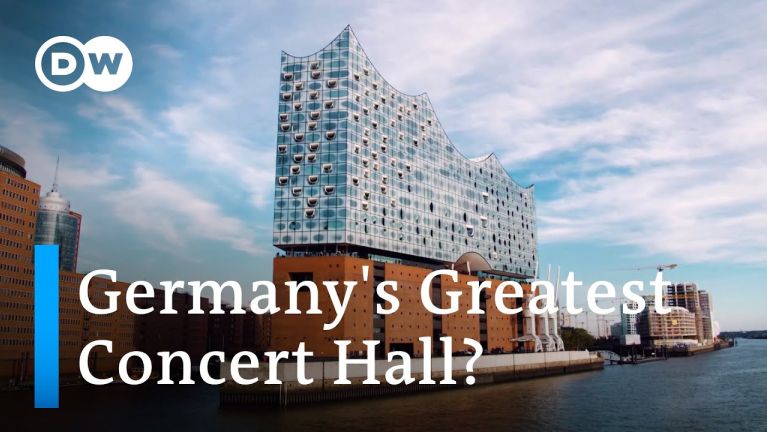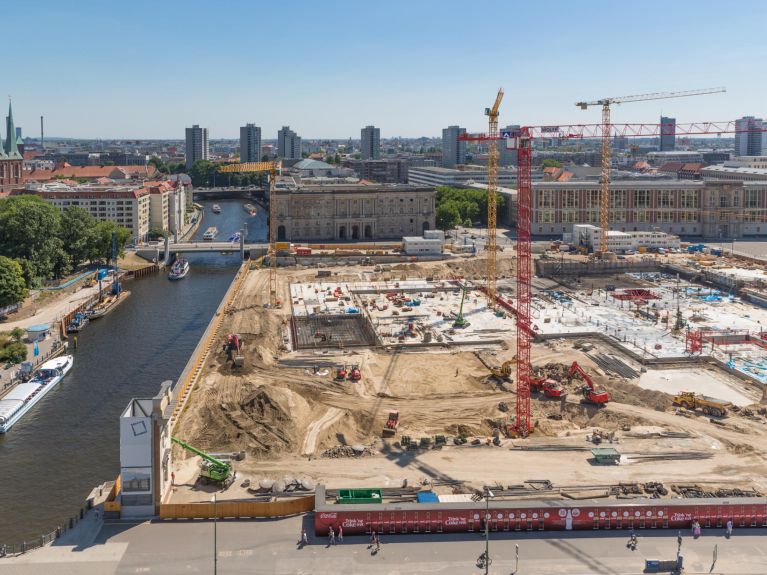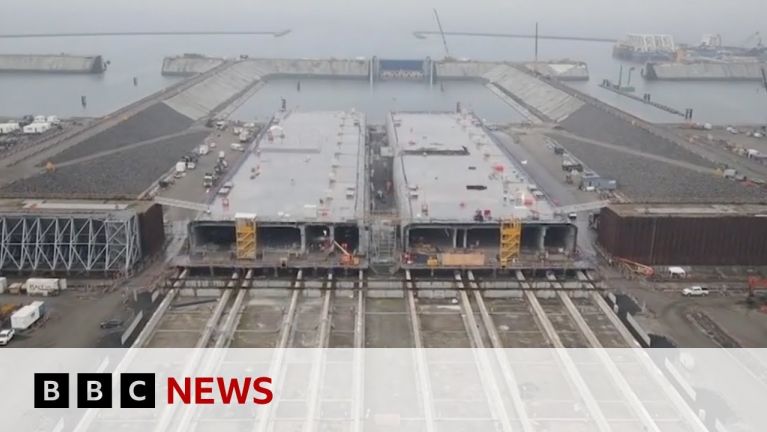Build, build, build!
From tunnels to high-rise buildings: the German construction industry is synonymous with quality, innovation and sustainability - it is growing with the demands placed on it, both at home and abroad.
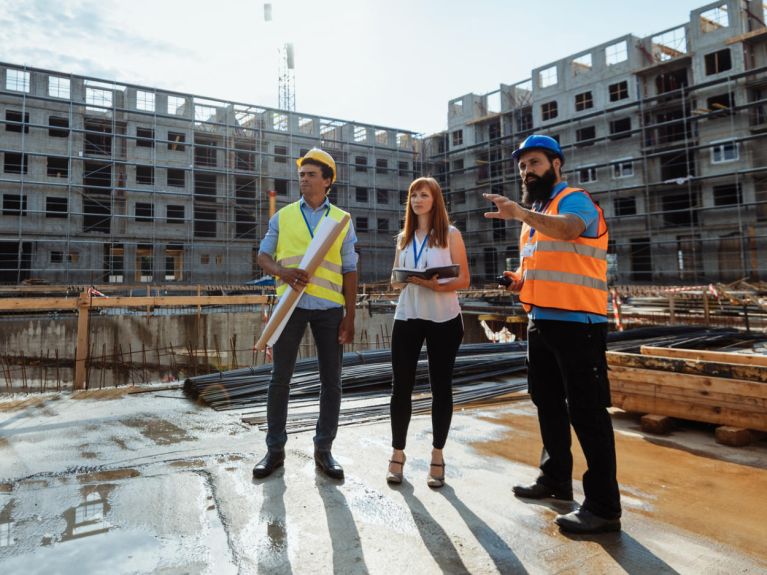
Early morning in Frankfurt am Main: in the headlights of the cranes, dozens of workers wearing yellow hard hats are scurrying around, lorries are manoeuvring into position, concrete boom pumps are being extended - and everyone on the building site knows exactly what they have to do. It’s not only urgently needed housing that is being built here. Watching all this hustle and bustle, the curious onlooker will quickly realise that German construction and engineering are synonymous with particularly high quality standards.
“Build, build, build!” is the slogan that Federal Chancellor Friedrich Merz recently came up with – and this is exactly what will happen if Germany’s construction industry has anything to do with it.
How important is the German construction industry?
The construction sector is one of the most important branches of industry in Germany. With 360,000 firms and employing 2.6 million people, it generates an annual turnover of around 430 billion euros. Firms of architects and engineers employ a good 540,000 people and are the planners behind the building projects.
Economic figures also highlight the importance of the construction sector: roughly eleven percent of Germany’s gross domestic product is used for investment in construction. And this figure is likely to rise, as the new Federal Government is planning to invest hundreds of billions of euros in new infrastructural and modernisation projects over the coming years. German construction firms cover a huge spectrum of activities and build anything that can be built – from residential and office buildings to high-rises, roads, bridges, tunnels, airports, railway stations and industrial plants.
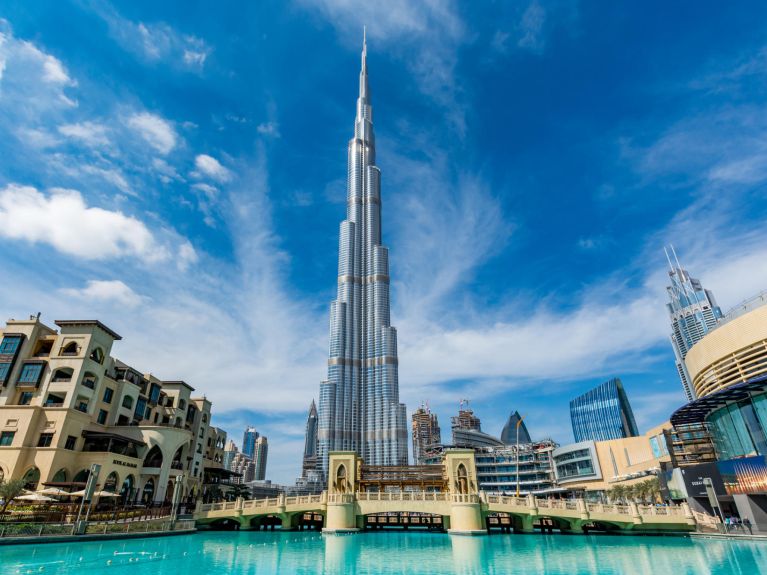
Strong SMEs in the German construction industry
The great majority are small and medium-sized enterprises: only 1.2 percent of them have more than 100 employees. At the same time, a handful of big names are known far beyond Germany’s borders - foremost among them is Hochtief with 37,000 employees and a turnover of around 28 billion euros. Other examples include Ed. Züblin, Max Bögl, Goldbeck and Bauer AG.
Some of the buildings constructed by German companies attract global attention. Hochtief for instance played the leading role in the construction of the Elbphilharmonie concert hall in Hamburg – an architectural icon that tourists from all over the world flock to see.
Dieses YouTube-Video kann in einem neuen Tab abgespielt werden
YouTube öffnenThird party content
We use YouTube to embed content that may collect data about your activity. Please review the details and accept the service to see this content.
Open consent formIn Berlin, Züblin applied the highest standards of craftsmanship when rebuilding Berlin City Palace. Bauer AG is internationally renowned for the specialist civil engineering services it provides, as demonstrated for example by the Burj Khalifa in Dubai, the world’s tallest building. Hochtief built the NorthConnex Tunnel in Australia, while Goldbeck has recently expanded with modular office and logistics buildings in France and Poland. These are just a few examples from a long list: several major building projects around the globe are testimony to the reliability and quality of the German construction industry.
Housing, bridges, infrastructure: quality meets demand
There is no shortage of building projects in Germany, either. in 2023, nearly 300,000 flats and houses were completed, around 263,000 of these being new buildings. This is not enough to meet the demand in urban areas, however. Rising land prices, high interest rates and tough building regulations are posing challenges for investors.
Such regulations guarantee internationally recognised quality standards. Germany’s building inspection authorities are considered to be among the most stringent worldwide: climate regulations are consistently adhered to and well trained personnel ensure stable, sustainable and safe buildings. Not only residential and office buildings but also infrastructure - such as roads, bridges and train tracks - benefit from this thorough approach, which prevents damage from occurring and thus saves resources in the long run.
All the same, many companies would like to see bureaucracy reduced: according to an industry survey carried out by the Central Federation of the German Construction Industry, 87 percent believe that quicker approval of projects is necessary. 57 percent call for public clients to be more efficient, while 50 percent want public contract allocation regulations to be made more flexible. This is exactly where the new “building turbo” agreed by the Federal Government comes in. Construction Minister Verena Hubertz stresses: “We want less paper and more diggers. We want to accelerate the pace of housing construction!”
Is sustainability a growth factor for the construction industry?
The German construction industry is also showing its innovative capacity when it comes to climate adaptation and sustainability. More and more firms are using new, resource-friendly materials such as recycled concrete or hybrid timber construction methods. Green roofs, solar power, rainwater collection and low-carbon building materials have long been the standard in many projects.
Climate-adapted construction - to protect buildings against heat, heavy rain or flooding - is seen as an opportunity. Wolfgang Schubert-Raab, president of the Central Association of the German Construction Sector, describes this as follows: “Climate adaptation is more than just a reactive protection concept - it’s an economic engine to drive the entire value chain in construction.” Schubert-Raab envisages new markets, employment opportunities and business models if regulations remain plannable and practicable.
Dieses YouTube-Video kann in einem neuen Tab abgespielt werden
YouTube öffnenThird party content
We use YouTube to embed content that may collect data about your activity. Please review the details and accept the service to see this content.
Open consent formFit for the future
Be it the tunnel under the Fehmarn Belt to Denmark, Stuttgart’s new main railway station or new modular residential quarters for big cities - day in, day out, German construction firms and architects demonstrate how quality, creativity and sustainability can be combined.
Considerable pressure remains, however: skilled labour is in short supply, planning processes are complex and material costs fluctuate. Yet it is precisely the challenges - climate protection, housing shortages, infrastructural modernisation - that could end up driving innovation and growth. After all, German construction firms have the strengths necessary to overcome them: experience, expertise and a high quality awareness. If everyone - policymakers, investors, municipalities, associations and the construction industry itself - pulls together, this can turn out to be a success story that will set standards worldwide.

